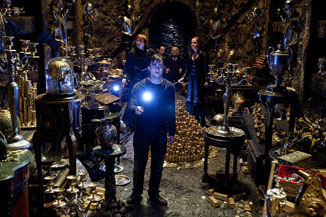|
|
Top 10 Film Industry Stories of 2011: #1Harry Potter Finally Graduates (More or Less)By Kim HollisDecember 30, 2011
In fact, what we learned in watching the transformation of the books to film is that fans of the series spanned a wide spectrum of ages. Sure, there were kids that loved the books and they made up a large portion of the audience, but adults who simply love stories from the fantasy genre found something special in the series as well. It was this combination of audience that kept the series remarkably consistent over the years it was in theaters, leading up to the grand finale of Deathly Hallows. Harry Potter and the Sorcerer’s Stone set the standard with its $317.6 million domestic finish, but it really impressed in terms of worldwide numbers, with a dynamic total of $974.7 million. Chamber of Secrets didn’t mix things up too much, as director Chris Columbus stuck with what worked in the first film, leading some to say it felt like too much of a rehash. This was reflected somewhat in the final numbers, as the $88.4 million debut slightly underperformed the original film, while the overall result followed typical sequel behavior. Domestically, Chamber of Secrets earned $261 million, while its worldwide total came in at $879 million. With a different calendar configuration, Harry Potter and the Prisoner of Azkaban fell even further behind the first two films. With a June 4, 2004 opening, the movie had to deal with summer box office trending rather than being able to take advantage of Thanksgiving-through-Christmas legs as the first two films had done. The result was an excellent $93.7 million first weekend in North America, but final totals of “only” $249.5 million domestically and $796.6 million worldwide. (It’s a shame, too, because in my opinion this is the finest film in the series.
|

|
|
|

|
Friday, April 19, 2024
© 2024 Box Office Prophets, a division of One Of Us, Inc.


